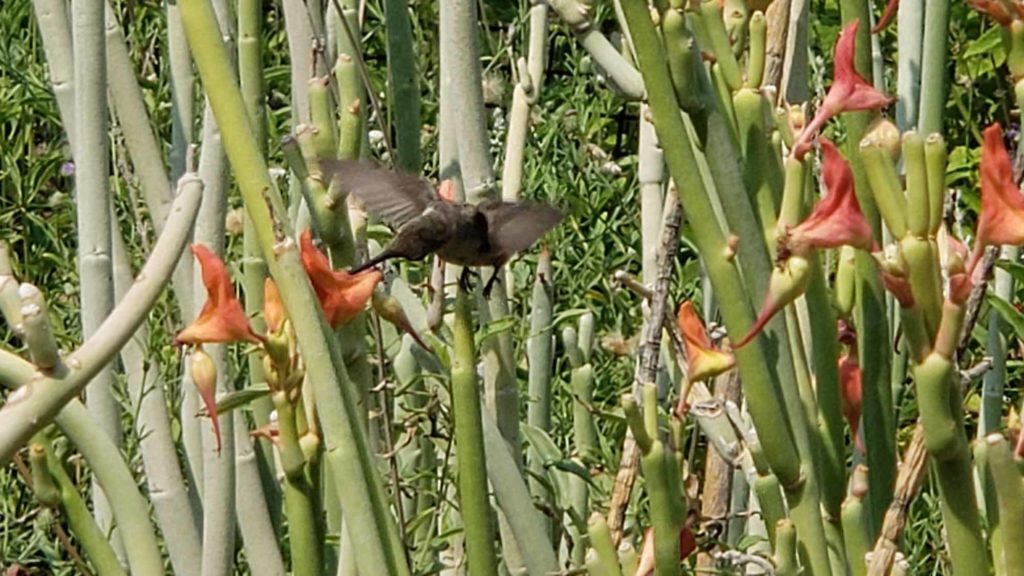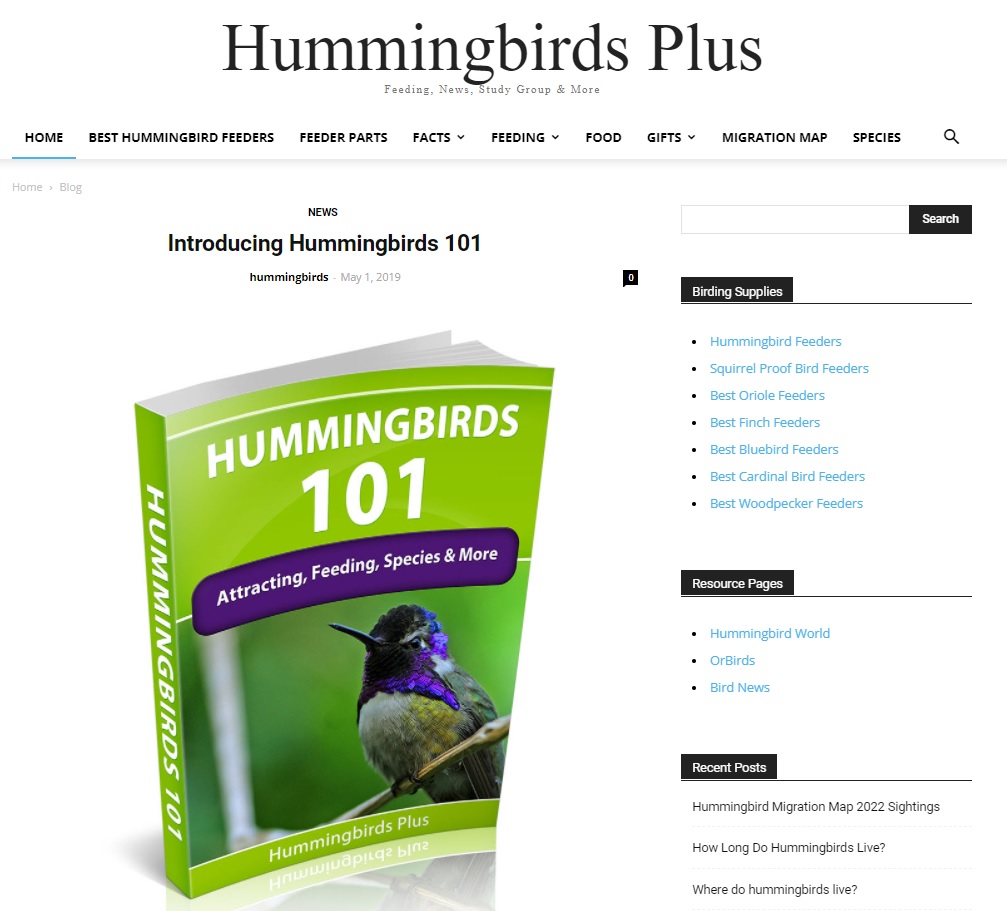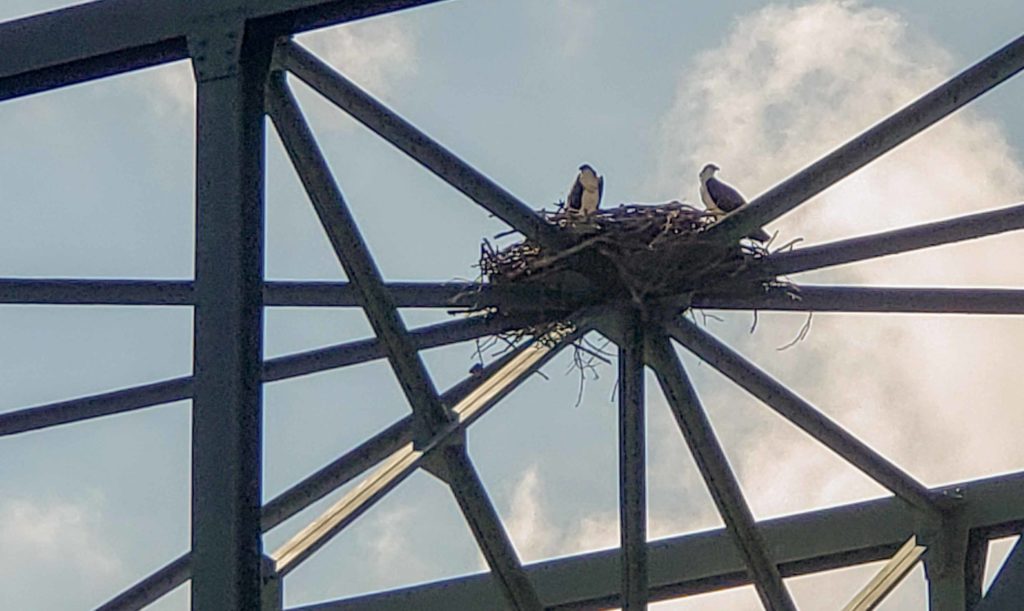The annual long journey of the tiny hummingbird is underway, and the migrating masses likely will be reaching Atlanta, Cobb County and the rest of North Georgia later this month and beyond as they head north for the mating season. Georgians are most likely to spot ruby-throated hummingbirds here.
Based on historical patterns reported by various tracking sources, the first in the hummingbird migration generally reach South Georgia by early March. Sightings increase in the areas around Atlanta by mid-March, then up to the Tennessee and South Carolina borders by April 1. On both spring and fall migrations, several websites like Hummingbirdcentral.com offer interactive maps where birdwatchers can register their sightings and help track the hummingbird migration schedule. The website JourneyNorth.org offers a map that can be animated over time.

When you spot the first hummingbird of the season, you can submit your sighting to help track the hummingbird migration. Individuals are encouraged to submit winter or unusual species sightings to the Georgia Department of Natural Resources. Georgia hummingbird enthusiast
A few hummingbirds remain in Georgia year-round, mostly in coastal and Southern areas of the state, according to the Georgia Department of Natural Resources. However, the majority migrate, traveling along a path from winter home lands in Mexico, Central America and the Caribbean to spring and summer nesting grounds along the Eastern US seacoast.

In the spring hummingbird migration to their nesting areas, hummingbirds take a leisurely approach to their journey. Typically, they will travel approximately 20 miles per day, then stop for resting and frequent feeding periods. With the highest metabolism of any species, they feed at hundreds of flowers and up to six times or more per hour, according to Hummingbirdsplus.org. Those stops are essential as hummingbirds generally consume at least half of their weight and as much as double or triple their weight in nectar each day. They also add some protein to their diets by eating some insects and spiders. (For lots of other cool hummingbird facts — like hummingbirds don’t “hum” at all, but rather create a humming sound due to the fast beating of their wings — visit hummingbirdsplus.org)
To spot migrating hummingbirds, don’t look up for sky-darkening flocks or neat V-style formations of the tiny birds traveling together. Hummingbirds are loners and fly individually. So the best chance of spotting them is as they fly around a garden looking for food. Some local botanical gardens like Smith-Gilbert Gardens in Kennesaw, Gibbs Gardens in Ballground and Atlanta Botanical Gardens feature special hummingbird areas where they concentrate nectar-producing flowers and other bushes that attract the tiny birds.

You can increase the number of hummingbirds near your home by making your yard and garden more hummingbird friendly. Hummingbird feeders that hold commercially-produced or homemade nectar. The US National Zoo and Smithsonian Institution publish a homemade recipe for nectar, plus lots of other tips for attracting hummingbirds. The Georgia Department of Natural Resources also publishes a list of native and exotic plants that help attract hummingbirds. Hummingbird enthusiast Elizabeth Donaldson has written an informative site that features Georgia hummingbird facts, pictures and sounds. She also publishes similar information for other states.
More Georgia Natural Content
OurTravelCafe.com focuses on North Georgia content that includes family-friendly outdoor activities and more. Some of our articles also appear on Newsbreak. Following are links to some of our recent Newsbreak nature and outdoor articles:
- Osprey Pairs Returning to Local Nests
- Short Walks to Some of Georgia’s Tallest Waterfalls
- Fast, Favorite Walks Near Atlanta

Follow DeanLand on Newsbreak
We also publish stories by DeanLand on NewsBreak. To see more content, follow DeanLand on the Newsbreak platform.





